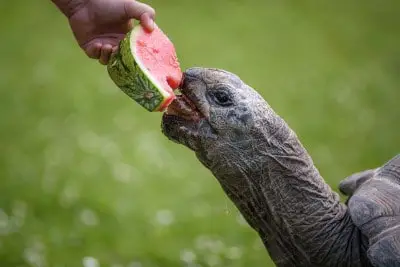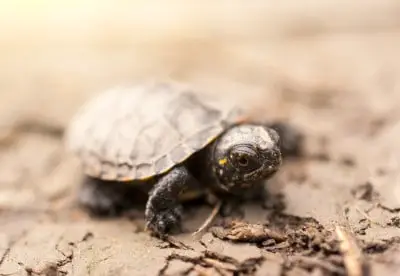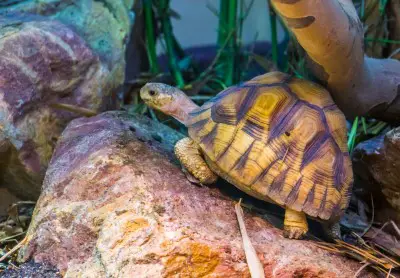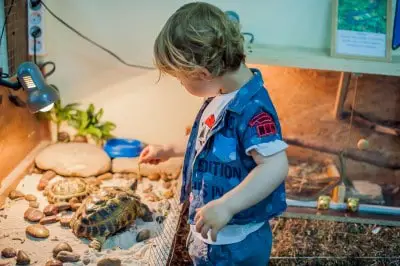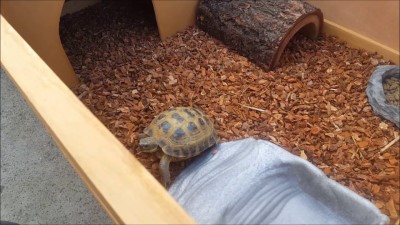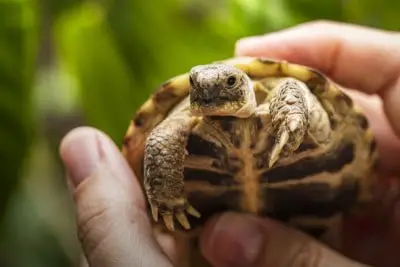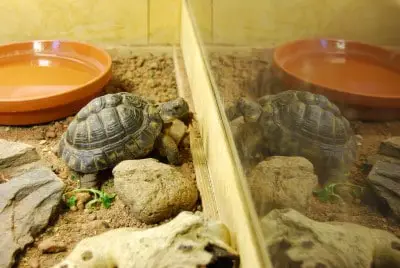Each creature has a special skill to help them survive and escape predatory attacks. For the tortoises, the one unique characteristic is their shell. You may wonder, other than offering protection to your pet, what other unique characteristics does the shell offer?
Each tortoise is born with a soft shell after hatching, which is composed of bones and other skeletal factors, attached to the tortoise’s body. Interestingly, a mature tortoise’s shell can withstand high amounts of pressure, almost two hundred times its weight.
There’s a lot more to learn about this organ; here are some interesting facts that we compiled for you.
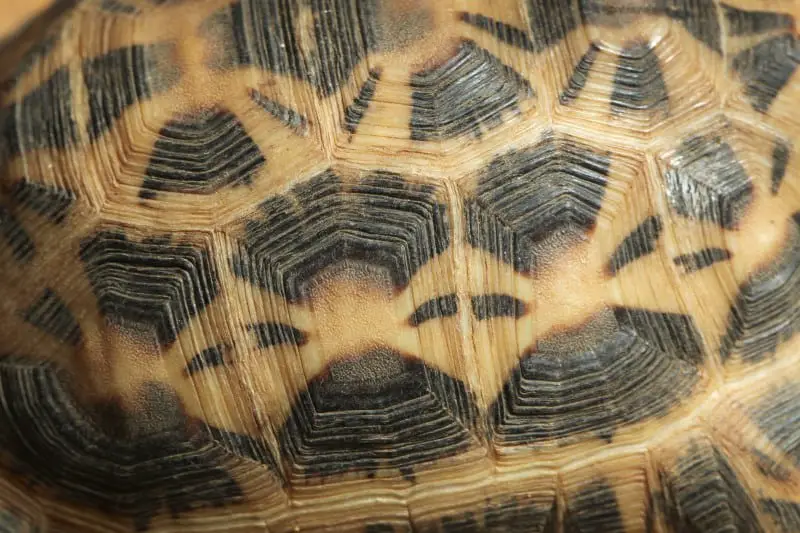
Why Do Tortoises and Turtles Have Shells?
Although there are various tortoise species distributed the world over, one thing remains constant; their shell. With countless years of evolution, tortoises and turtles have been famous for their rock-hard shells. It consists of the plastron and the carapace, both extensions of the reptiles’ skeleton. These two parts have now evolved and joined to form what we know as the outer shell.
Primarily, the shell acts as armor for the tortoises and turtles to shield them from predatory attacks. Where the reptiles fail in speed, the hard shell doubles up to serve as protection. Different species have various shell shapes and sizes to suit their needs and help them fit in their various habitats. Contrary to many people’s beliefs, the shell is not just an outer detachable cover. This armor is an evolved version of their ancestors’ hard ribs, which also served as protection. Therefore, a tortoise’s shell is a bone structure to shield the internal organs.
The shell is mostly dome-shaped, hard, and heavy for most tortoise species except for pancake species, whose shell is flattened, allowing it to survive by fitting in between rock crevices. These places are the most secure hiding spots given that once it settles among the rocks, its lungs inflate, tightening the shell. All the efforts by a predator to remove it from the location will prove futile. Other tortoises and turtles also have extremely hard shells which makes it tasking for a predator to crush during an attack.
Are Tortoises and Turtles Born With Their Shells?
Every turtle and tortoise species has a soft shell after hatching. The baby turtle still needs protection; hence, the shell is a vital organ. Unlike the adult reptiles’ shells, the baby turtles have softer armors, which get harder as they mature. The turtle grows with the same shell instead of growing a new one. It becomes an integral part of the turtle, and it’s impossible to detach it without hurting them in the process.
The cover is also the exoskeleton, meaning that it must grow alongside other bones in the turtle’s body. Like adults, baby turtle shells are flatter, leathery, and softer, while baby tortoises have rounder, thicker shells. Another different trait is that the turtles’ shells consist of scutes; these parts will eventually start overlapping as the babies grow and will begin to shed. The tortoise scutes will, however, overlap and stay in place.
What Are Tortoise Shells Made of?
The tortoise and turtle’s shell is an intricate design of the reptiles’ exoskeleton. It comprises bones such as ribs and other skeletal structures, typical among reptiles. The shell also contains the dermal bone, which is infused into it to form the extended ribcage, now known as the hard shell. The shell is primarily made of two parts; the plastron and the carapace, forming a bridge.
The carapace is the shell’s outer structure, comprising separate horny pieces called scutes to help shield the tortoise from injuries. The shell contains keratin and has ribs, and the spinal skeleton is fused to it. The plastron, on the other hand, is the shell’s underside. It’s the flat part of what you can call the tortoise’s belly, and it’s where the shell’s bridge struts lie.
For some species, the plastron shape aids in determining the tortoise’s sex. It’s concave for males to give room during mating and convex for females. For a healthy shell, the tortoise needs a lot of calcium, vitamins, and minerals. These are the necessary nutrients for the development of the keratin in their shells; this way, their shells, and bodies can grow at the same rate.
How Hard Is a Tortoise Shell?
The tortoise uses its shell for protection against predators; therefore, this cover must be hard. A tortoise’s shell is extremely solid, taking pounds of pressure (up to two hundred times its weight) without breaking. Thus, you will need to exert a lot of pressure to break into it. Interestingly, an empty tortoise’s shell is even tougher than a live one. A mature tortoise’s shell is also harder than a juvenile’s; the more they grow, the harder the shell becomes.
They are made of hard scutes that regrow to form new fortified layers of the tortoise’s shell. Although the armor is exceptionally strong, some predators can still easily dispatch the tortoise. For instance, the crocodile and the honey badger can break it, though after an intense struggle. Since the shell is tasking to pry, the two creatures would only devour tortoises if there are no alternatives.
Another easy way to break into a tortoise’s shell is through a bullet. It has great speed and exerts a lot of pressure on a surface; hence, it easily tears into the shell’s keratin layer. Consequently, a tortoise can bleed out and die after a while if there’s no medical attention.
The shell may also be vulnerable when a car runs over it, especially if the tortoise is juvenile. However, if it’s mature and the car is small, the shell may remain intact; a mature tortoise has stronger armor and a small car exerts little pressure.
What Is a Tortoise Shell Color?
There is no specific color for the tortoise’s shell. Different species have various shell shapes and colors, with the only constant being toughness. Reptiles have two cells that help to dictate the shell’s color; the chromatophores and the melanocytes. These cells are strategically located to send color pigments to the shell to give it its color. The tortoise’s color depends on these cells’ presence and distribution.
The natural scute’s color ranges from bright to dark colors, or a mixture of both. However, the plastron color differs, but it is mostly white or yellow. Unlike other animals, tortoises cannot change their pigmentation as soon as their embryo fully develops. The change can only happen if there is an interruption with the responsible cells.
Such instances may be due to unfavorable conditions like poor nutrition, trauma, and diseases. Therefore, you will notice the tortoise’s color-changing, and its shell will appear different, all indicators of an unhealthy shell.
Is a Tortoise Attached To Its Shell?
Most tortoises can hold back their appendages and head whenever they sense danger and relax when they feel safe. The shell is spacious enough to accommodate all limbs such that the predators can’t reach them.
The tortoise is inseparable from its shell, and detaching it is fatal. The shell forms part of the tortoise because it has attachments to the vertebral column and ribs. Therefore, it protects other vulnerable internal body organs from dangerous exposure. The shell is not only attached to the tortoise’s skeleton but also blood cells and nerve endings. Consequently, an injury on it can affect the blood cells and cause internal bleeding and eventual death.
The tortoise’s shell may look separate from the reptile’s body, but the truth is, the tort can feel pain through it. The bony casing comprises live nerve endings that connect to and sends impulses to the central nervous system. The tortoise’s exoskeleton also grows along with the reptile and fits well to its size. Larger torts will always have a big shell and vice versa.
If it were a separate dead structure, then it couldn’t have the ability to grow. Note that the shell grows at the same pace as the other tortoise skeletal parts. If you are a tortoise keeper, you will notice that they can recognize and enjoy your touch. They wouldn’t feel anything if their shell didn’t have nerve endings.
Can Tortoises and Turtles Get Out of Their Shell?
The shell is entirely connected to the tortoise, making it impossible for them to slip out of it. They hatch with it, and it stays intact, grows, and matures with age. The structure comprises up to fifty bones, including the rib cage and the spinal cord. Therefore, the shell fuses with the tortoise’s bones.
The shell’s main role is for the reptile’s protection; hence, the tortoise’s life depends on it at all times. It’s one of the primary reasons why the reptile has survived extinction over millions of years; this wouldn’t be possible if it could slip in and out of it at will. Moreover, the shell has numerous nerve endings, meaning that the tortoise can feel pain through it. Removing it from its shell is like skinning an animal which is excruciating.
It would be best if you didn’t force them out of the shell because it forms part of their skeletal system. Removing it is extremely painful for the tortoise, and it may die from the pain. They can only tuck their bodies into the shell when they need to hide from predators. Once inside, they stay put, confident that nothing can penetrate their shells.
Can Tortoises Feel Their Shell?
At a glance, you may believe that the dry and bony tortoise’s shield is a separate entity from the reptile’s actual body. Therefore, it will leave you guessing whether the reptile can slide in and out of it at will without any fatalities. You may also presume that the shell is only a lifeless structure.
The fact is the tortoise’s shell is part and parcel of its skeletal system, with nerve endings and blood vessels attached to it. Therefore, like the human skin, the tortoise carapace can send impulses of touch and pain to the animal’s brain. If you are a tortoise keeper, you will notice that the tortoise seems to like it when you touch or rub the cover regularly. You may also notice that it would come closer to you when you approach it, knowing that you will pet it.
If the cover were only an outer, lifeless structure, the pet would have no feeling whatsoever. Besides, the tortoise’s spinal cord is attached to the armored shell, making it more sensitive to any pressure applied, whether it’s a light touch or an extreme pressure such as a heavy object’s force.
The plastron (under the shell) is equally sensitive to touch, just like the carapace. This area also contains nerve endings, enabling the tortoise to feel its shell. However, transmissions within the tortoise’s shell may differ depending on the tortoise species in question. Some species have thin keratin layers, which magnify the feeling obtained from the nerve endings; such tortoises will feel more pain even from a slight hit.
Can Tortoises & Turtles Change Their Shells?
Every tortoise and turtle has only one shell that they get from birth. Since they cannot leave their armors, they cannot change to get a new one. The only exception is that some turtles can shed old scutes and form new ones. The one they have when they hatch gradually grows, and as new scutes develop, they overlap with the old ones.
As a result, the turtle must shed the old ones to give room for stronger scutes. The shells retain their shape and size unless there are health-related issues. Shedding occurs naturally as the scutes fall off while the turtle does its daily activities like basking. When in the sun, the scutes dry up, making it easier for them to detach.
The scutes must come off naturally but not too frequently. If the turtle sheds the shell too often, the underlying soft scutes remain exposed. This condition is called dysecdysis and can be linked to cases of renal issues among turtles.
How Do Tortoises and Turtles’ Shells Grow?
Nutrition is paramount for all animals. Their shells contain keratin, which is the same substance in human nails. For turtles’ shells to grow, they need nutrients such as calcium and other vitamins and minerals. They can find these from the food, water, and frequent basking. Vegetables, fruits, and other supplements are necessary for their diet since they contain various nutritional benefits.
The main mineral they require for a strong shell is calcium; therefore, they must absorb as much of it as possible. Notably, some foods hinder calcium absorption in their bodies; thus, owners should avoid providing spinach. Without adequate calcium, the tortoises and turtles may suffer from diseases such as softshell.
Similarly, the reptiles can suffer from bone issues such as the bones’ metabolic disease related to insufficient calcium in the body. The condition can also be due to poor sunlight exposure and other conditions that affect the internal organs. They can also suffer from shell rot, which may make the shell deform permanently.
Does a Tortoise Shell Heal by Itself?
The tortoise and turtle shell is entirely made of keratin, which are living and natural cells. The same way that your nails can grow back is how the shell can repair itself when injured. Such organic material can heal if left alone.
However, it depends on the extent of damages. If the injury is severe, the tortoise must get a vet’s help as soon as possible, but if it’s a mild issue and not life-threatening, then you can leave the shell alone to heal.
Although it can quickly repair itself, the tortoise is still susceptible to lethal bacteria through the cracks. Hence, the shell needs a check-up since cracks may lower the reptile’s chances of protection from a predator by weakening the shell.
The vet will first assess the extent of the damage and accordingly suggest the way forward. The recommendation may be antibiotics for infections or a procedure to bind the cracks with bonding material. Even if you think it’s a small crack, you may still need to get an expert opinion to be sure.
Can Tortoises and Turtles Survive with a Broken Shell?
The shell can break due to strong external forces or an attack from powerful predators like crocodiles or honey badgers. It may also result from crushing by a heavy vehicle or a bullet penetration. Similarly, the shell can get damaged due to nutrient deficiencies or living in a filthy enclosure; both causes of ulcers called shell rot.
The good news is that a broken shell doesn’t mean imminent death. However, it is still a serious case that needs urgent medical attention. When it breaks, the tortoise remains vulnerable to attacks by predators, and the cracks make it easier to break the shell further.
If a vet doesn’t take care of the injury, the reptile can acquire serious infections. Vets specialized in tortoise and turtle care can mend a broken shell using bonding materials. Since the cover consists of keratin which is a live cell, a broken shell can repair and grow.
Can a Tortoise Live Without Its Shell?
Turtles and tortoises can’t live without shells; the organ functions as a rib cage and a skin, both essential parts of a vertebrate’s anatomy. Looking at animals like the hermit crabs, one would think that the reptiles can also detach from their shell as they mature then grow another one. The hermit crab’s shell differs from the tortoise or turtle’s shell.
These reptiles lack other skill sets that help other animals survive in the wild, such as speed, camouflage, and other unique abilities. To compensate, they have tough armor that they can easily slip into when a predator lurks. Similarly, the shell comes in handy to prevent the reptile from overheating while basking, given that they are cold-blooded animals.
Therefore, they may not survive for long without their shell as they will be exposed to attacks and direct sun rays. Also, the shell is like an extension of the reptiles’ exoskeleton since it forms the spine and the ribcage; detaching it from them means removing their bones.
Similarly, the shell has nerve endings; therefore, the reptiles will feel excruciating pain if you attempt to remove it. It will equate to living without a rib cage and a spine. If it cracks, the tortoise will also be susceptible to severe infections and bacteria; this is the same thing that would happen if you fail to treat an open wound since the shell is like the reptiles’ skin.
Is It Illegal To Own a Tortoise Shell?
In most countries and especially in the US, buying, selling, importing, and exporting tortoises’ shells is against federal laws. Anyone guilty of dealing in such endangered animal products is answerable to the wildlife officers. Earlier on, you could freely trade and own such items, but various governments installed a ban on such products; this barred anyone from selling them, especially if they were from endangered species.
You would only sell them in their original form if you possessed a permit showing that you acquired them before the ban. Tortoises’ shells made into hairbrushes or guitar picks before 1947 can be sold freely today, but only with permission from the authorities detailing when the shells were made.
You can only trade in them if you have the proof certificate. It’s therefore imperative to be cautious when purchasing souvenirs made from tortoise shells. You won’t want to be on the wrong side of the law if the wildlife authorities catch you in possession of one.
Read more: Paint a Tortoise’s Shell? Hell No!
Parting Shot
There are many reasons to prove that the turtle and tortoise’s shell is a fascinating organ. The reptiles are born with it, and it stays intact throughout their lives. It’s an invaluable part of the body, and they cannot live without it. Not only is it the exoskeleton’s extension, but it is also quite sensitive and offers the reptiles strong protection from predatory attacks. If you found this article interesting and helpful, feel free to share it.
More tortoise facts here:

